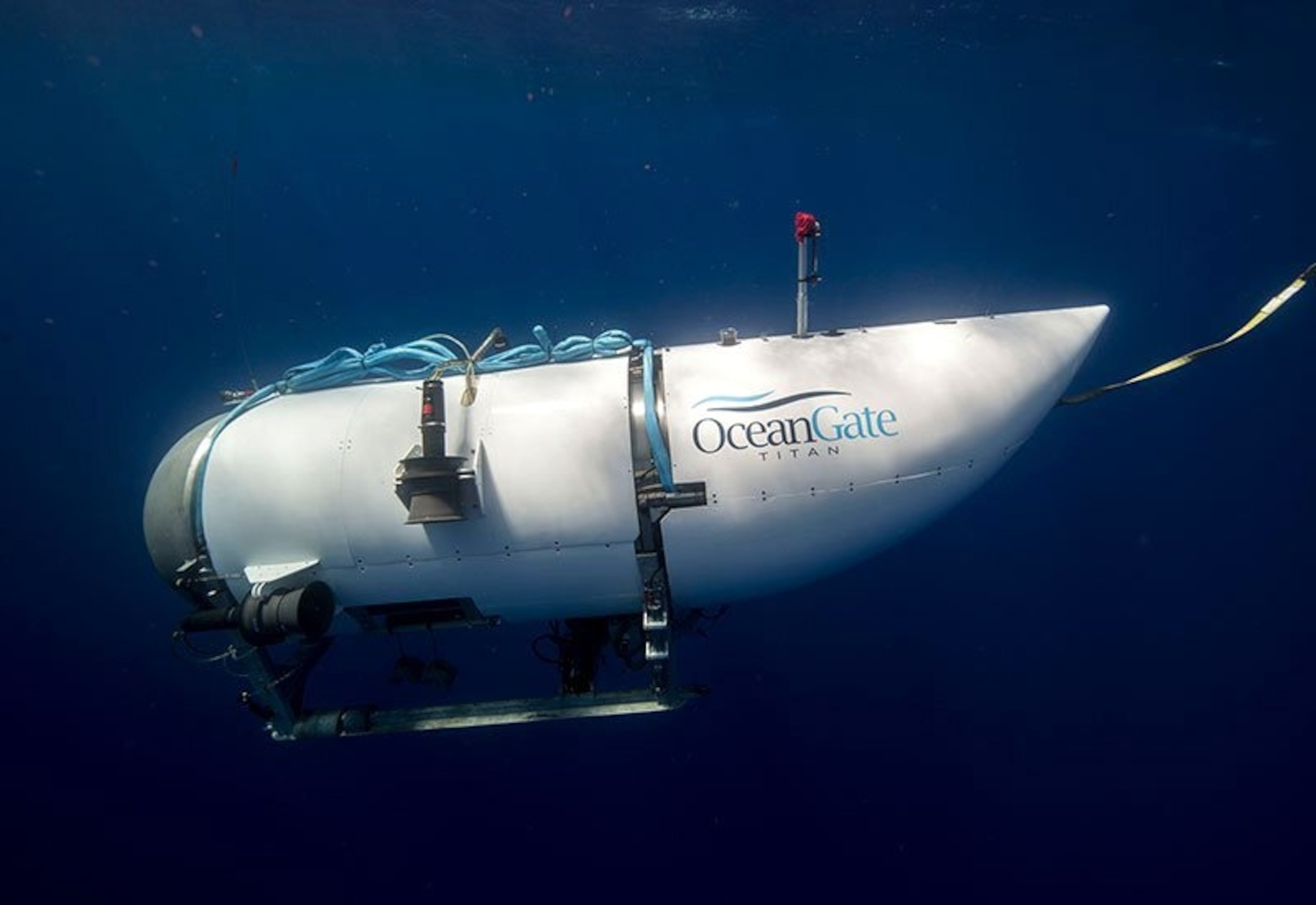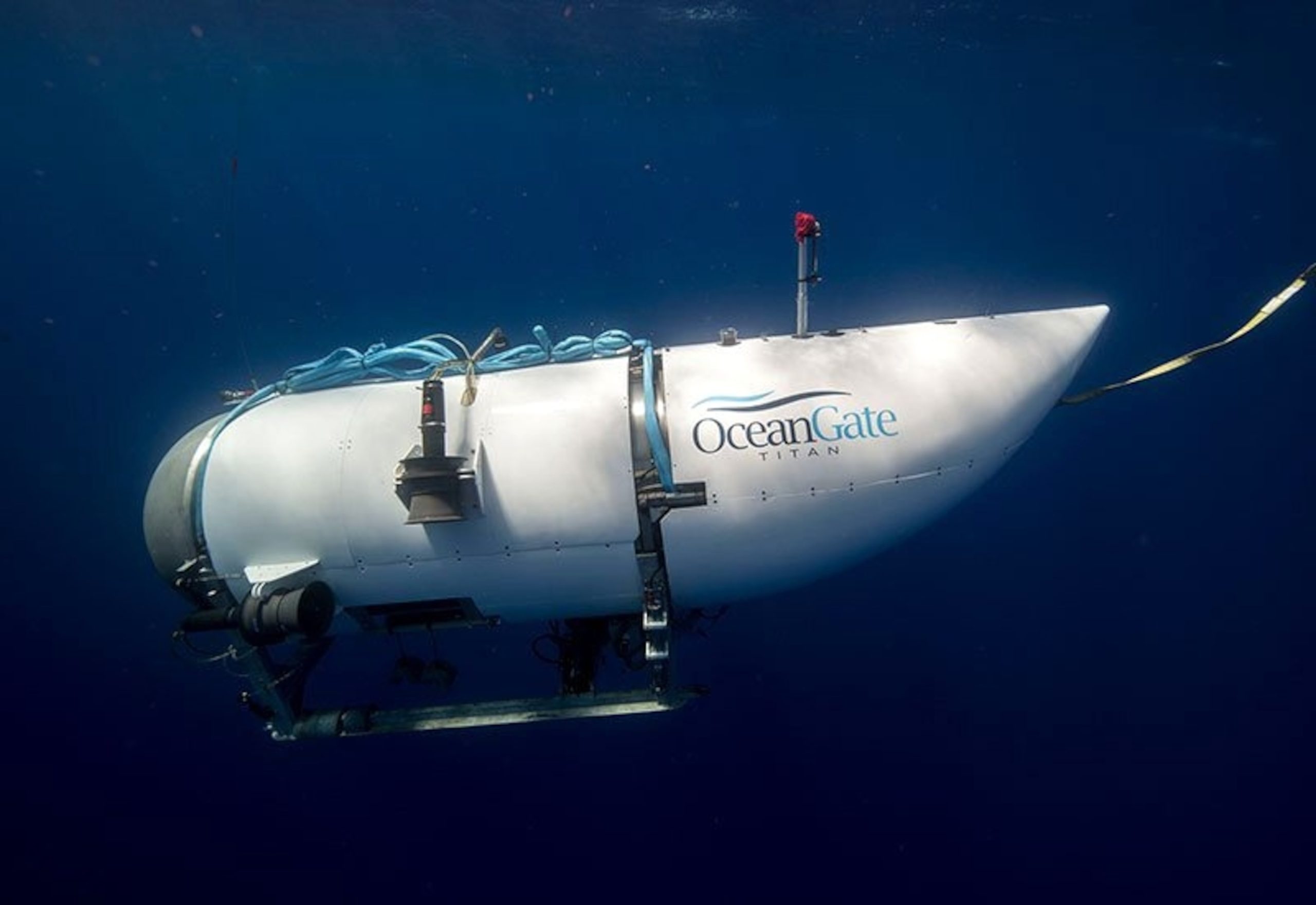The estate of a Titanic researcher who was among the five people killed when the Titan submersible catastrophically imploded while on a deep-dive voyage to the site of the famous shipwreck last year has filed a wrongful death lawsuit seeking more than $50 million in damages.
The lawsuit, filed by the estate of French explorer Paul Henri Nargeolet, accused OceanGate CEO Stockton Rush, who also died in the implosion, and others of gross negligence by designing, building and operating Titan “in almost every way, in a manner outside the norms of the diving community and industry, driven by Rush’s apparent obsession with being remembered for innovation alongside such luminaries as Steve Jobs and Elon Musk” and to cultivate an image as a “maverick genius” of the deep-sea diving world.

In this undated file photo, the Titan submersible, operated by OceanGate Expeditions to explore the wreckage of the sunken SS Titanic, is shown.
EyePress News via Shutterstock, FILE
The lawsuit also alleged crew members aboard the doomed vessel knew they would die before the June 2023 implosion and experienced “terror and mental anguish.”
“While the exact cause of failure may never be determined, experts agree that the Titan’s crew would have realized exactly what was happening,” the lawsuit stated. “The carbon-fiber hull was cracking under extreme pressure — prompting the pilot to release weight and attempt to abort. Common sense dictates that the crew were well aware they were going to die, before dying.”
The lawsuit was filed Tuesday in Washington state, where OceanGate is based. The submersible company suspended all exploration and commercial operations after the deadly implosion.
An OceanGate spokesperson had no comment.
Nargeolet’s estate relied in part on public reporting about the questions experts raised concerning Titan’s safety prior to its fateful final dive, including warnings the vessel was not built to hold up over time to the challenges of deep-sea expeditions.

In this May 31, 2013, file photo, Paul-Henri Nargeolet, director of a deep ocean research project dedicated to the Titanic, poses next to a miniature version of the sunken ship inside a new exhibition, at ‘Paris Expo’, in Paris.
Joel Saget/AFP via Getty Images, FILE
“Decedent Nargeolet knew that the Titan was different from other submersibles in that it was constructed from carbon fiber and used other unusual materials and components. However, Nargeolet was not an engineer, a submersible designer, or a physicist” and, the lawsuit claimed, appeared to have the “false impression about the safety and seaworthiness of the vessel” based on Rush’s word.
“Nargeolet may have died doing what he loved to do, but his death — and the deaths of the other Titan crew members — was wrongful,” the lawsuit stated.
Nargeolet, known as “Mr. Titanic,” was the director of underwater research at RMS Titanic, which owns the salvage rights. The adventurer had participated in 37 dives to the wreckage of the Titanic, including the first expedition in 1987 shortly after the ship’s location was discovered.
In addition to Nargeolet and Rush, those killed on the vessel included British businessman Hamish Harding, Pakistani businessman Shahzada Dawood and his 19-year-old son, Suleman.
The attorneys representing Nargeolet’s estate said this was the first lawsuit filed in connection with the Titan implosion.
“We are hopeful that through this lawsuit we can get answers for the family as to exactly how this happened, who all were involved, and how those involved could allow this to happen,” Tony Buzbee, one of the attorneys in the case, said in a statement.
The U.S. Coast Guard is scheduled to conduct a formal hearing starting Sept. 16 in South Carolina for the Marine Board of Investigation to consider evidence related to the loss of the Titan.
In June, the Coast Guard said the investigation into the implosion was taking longer than anticipated, calling it a “complex and ongoing effort.”
A lawsuit has been filed for wrongful death following the tragic implosion of the Titan submersible. The incident, which occurred during a deep-sea exploration mission, resulted in the loss of several crew members and has left their families seeking justice for the untimely deaths.
The Titan submersible was on a mission to explore the depths of the ocean when it suddenly imploded, causing a catastrophic loss of life. The exact cause of the implosion is still under investigation, but early reports suggest that a structural failure may have been to blame.
The families of the deceased crew members have filed a lawsuit against the company responsible for the Titan submersible, alleging negligence and wrongful death. They claim that the company failed to properly maintain and inspect the submersible, leading to its catastrophic failure and the loss of their loved ones.
Wrongful death lawsuits are often filed in cases where negligence or misconduct has led to the death of an individual. In this case, the families are seeking compensation for the loss of their loved ones, as well as punitive damages to hold the responsible party accountable for their actions.
The outcome of the lawsuit remains uncertain, but it serves as a reminder of the dangers that can arise in deep-sea exploration missions. It also highlights the importance of proper maintenance and inspection procedures to ensure the safety of crew members and prevent tragic incidents like the implosion of the Titan submersible.
As the investigation into the cause of the implosion continues, the families of the deceased crew members are left to mourn their loss and seek justice through the legal system. The lawsuit filed for wrongful death following the Titan submersible implosion serves as a stark reminder of the risks involved in deep-sea exploration and the need for accountability when tragedies occur.



